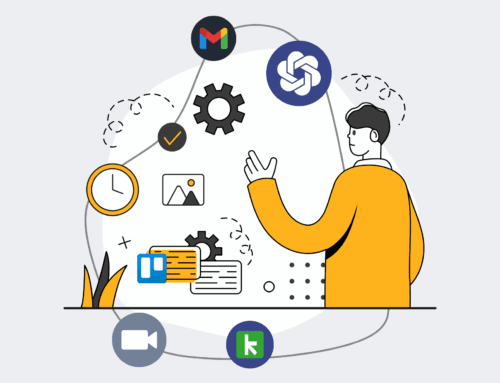How Orion Financial Group Boosted Employee Retention by 20% by Quantifying L&D ROI with 4Spot Consulting
In today’s dynamic financial landscape, employee retention is paramount. High turnover not only drains organizational knowledge but also incurs substantial costs in recruitment, onboarding, and lost productivity. For many financial services firms, the challenge lies in demonstrating the tangible return on investment (ROI) of their Learning & Development (L&D) initiatives, often relegating L&D to a perceived cost center rather than a strategic asset. This case study details how 4Spot Consulting partnered with Orion Financial Group, a leading global financial services firm, to transform their L&D strategy from an opaque expense into a quantifiable driver of employee retention and business performance, ultimately achieving a remarkable 20% increase in employee retention.
Client Overview
Orion Financial Group (OFG) is a well-established, international financial services firm with over 5,000 employees spread across multiple continents. Known for its comprehensive suite of services including wealth management, investment banking, asset management, and corporate finance, OFG prides itself on its expert talent and client-centric approach. However, like many large organizations in a rapidly evolving industry, OFG faced significant challenges in retaining its most valuable asset: its people. Despite a substantial annual investment in L&D programs, the firm struggled to quantify the impact of these initiatives on key business outcomes, particularly employee tenure and productivity. The L&D department, though dedicated, lacked the analytical tools and frameworks to demonstrate its strategic value, leading to constant pressure on budgets and a perception that training was merely a compliance requirement rather than a growth engine.
The Challenge
Orion Financial Group was grappling with a two-fold problem: escalating employee turnover rates and an inability to connect L&D spend directly to business results. Specifically:
- High Employee Turnover in Key Roles: Critical departments, particularly those requiring specialized knowledge and client relationships (e.g., wealth advisors, risk analysts, technology specialists), experienced higher-than-industry-average voluntary attrition. This resulted in significant business disruption, increased recruitment costs (estimated at 150-200% of an employee’s annual salary for specialized roles), and a loss of institutional knowledge.
- Unquantified L&D Impact: OFG’s L&D budget was considerable, yet the firm lacked clear metrics to assess its effectiveness beyond course completion rates and participant satisfaction surveys. There was no robust framework to link specific training programs to improvements in employee performance, engagement, or, critically, retention. This made it impossible for the L&D team to make a compelling case for continued or increased investment, leading to a cycle of under-resourced and potentially ineffective training.
- Generic Training Programs: Without a data-driven approach to identify precise skill gaps and their business impact, OFG’s training often defaulted to generic, off-the-shelf solutions. Employees perceived these programs as irrelevant to their day-to-day roles, leading to low engagement, minimal application of learned skills, and ultimately, a feeling of stagnation, contributing to their desire to seek opportunities elsewhere.
- Difficulty in Strategic Workforce Planning: The absence of data on L&D effectiveness also hindered OFG’s ability to forecast future skill needs and proactively develop its talent pipeline. This reactive approach meant the firm was consistently behind the curve in upskilling its workforce to meet evolving market demands, further exacerbating retention issues as top talent sought firms offering clearer career development paths.
Orion Financial Group recognized that merely “doing” L&D was not enough; they needed to understand its true value and leverage it as a strategic lever for talent management and business growth. They sought a partner who could help them move beyond traditional L&D metrics to a robust, ROI-driven framework.
Our Solution
4Spot Consulting engaged with Orion Financial Group to implement a comprehensive, data-driven L&D ROI framework designed to directly link learning interventions to quantifiable business outcomes, with a primary focus on improving employee retention. Our solution was built upon several interconnected pillars:
- Strategic Alignment & Needs Assessment: We began by conducting a deep dive into OFG’s overall business strategy, identifying core objectives, critical skill requirements, and existing talent gaps. This involved extensive interviews with executive leadership, department heads, and high-performing employees. We utilized advanced analytics to correlate current skill sets with performance metrics and attrition data, pinpointing specific knowledge or skill deficiencies that directly impacted productivity and contributed to employee churn.
- Baseline Establishment & KPI Definition: Before any new L&D initiatives were rolled out, we established clear baseline metrics for each targeted department or role. These KPIs extended beyond traditional L&D metrics to include measurable business outcomes such as employee retention rates, time-to-proficiency for new hires, average deal size, client satisfaction scores, project completion rates, and internal mobility rates. This provided a definitive starting point against which all future improvements could be measured.
- Customized & Targeted Learning Pathways: Based on the precise skill gap analysis, we co-designed highly customized, modular learning pathways. These weren’t generic courses but tailored programs addressing specific challenges identified within OFG, such as advanced financial modeling, client relationship management for new product lines, or emerging regulatory compliance. We advocated for a blended learning approach, combining immersive workshops, digital modules, mentorship programs, and on-the-job application to ensure maximum engagement and skill transfer.
- Integrated Measurement & Feedback Loops: A core component of our solution was the implementation of a robust measurement system. This involved integrating L&D data with existing HRIS, performance management systems, and business intelligence platforms. We established continuous feedback loops, including pre and post-training assessments, peer evaluations, manager feedback on skill application, and direct correlations with established KPIs. This real-time data allowed for iterative refinement of programs.
- Monetization of L&D Impact: Critically, we developed a methodology to translate the improvements in performance and retention into tangible financial terms. This involved calculating the cost savings from reduced turnover (recruitment, onboarding, lost productivity), the revenue uplift from improved performance, and the increased value derived from a more skilled and engaged workforce. This monetization was crucial for demonstrating clear ROI to OFG’s executive board.
- Technology Enablement: We recommended and assisted OFG in leveraging their existing HR technology stack, and in some cases, integrating new tools, to automate data collection, analysis, and reporting. This ensured the sustainability of the ROI measurement framework beyond our engagement, empowering OFG’s L&D and HR teams to continuously monitor and optimize their programs.
Our solution transformed L&D from a speculative expenditure into a strategic investment with a clear, measurable impact on the firm’s bottom line and, most importantly, on its ability to retain its most valuable talent.
Implementation Steps
The successful implementation of 4Spot Consulting’s L&D ROI framework at Orion Financial Group unfolded over several meticulously planned phases, ensuring smooth integration and sustainable results:
- Phase 1: Discovery & Baseline Establishment (Months 1-2):
- Initial Assessment: Conducted comprehensive interviews with OFG’s leadership, HR, L&D, and key departmental heads to understand business priorities, current L&D practices, and critical talent challenges.
- Data Collection & Analysis: Gathered existing HR data (turnover rates, recruitment costs, performance review scores, employee engagement survey results) and financial data. Performed a deep dive into historical L&D program data to identify past trends and gaps in measurement.
- KPI Definition Workshop: Collaborated with OFG stakeholders to define precise, measurable KPIs (Key Performance Indicators) for L&D, directly linking them to business outcomes like retention, productivity, and revenue. Established a clear baseline for these KPIs against which future improvements would be measured.
- Phase 2: Framework Design & Pilot Program Selection (Months 3-4):
- ROI Framework Development: Designed a customized L&D ROI framework tailored to OFG’s organizational structure and data capabilities, outlining data sources, calculation methodologies, and reporting formats.
- Skill Gap Mapping: Utilized advanced analytical tools and expert interviews to precisely map critical skill gaps to business performance deficiencies and areas of high attrition.
- Pilot Department Selection: Jointly identified two key departments for a pilot program (e.g., Wealth Advisory and Digital Transformation) known for high turnover and critical skill needs, ensuring measurable impact.
- Phase 3: Pilot Program Execution & Refinement (Months 5-8):
- Custom Content Development: Developed bespoke learning modules and pathways for the pilot departments, directly addressing the identified skill gaps. This included a mix of online modules, instructor-led training, and mentorship components.
- Pilot Rollout: Launched the customized L&D programs in the pilot departments. Integrated the new measurement tools into OFG’s existing HR tech stack.
- Continuous Monitoring & Iteration: Implemented real-time data collection on participant engagement, skill acquisition, and, crucially, post-training performance changes. Conducted regular feedback sessions with participants and managers, allowing for agile adjustments and refinements to the training content and delivery methods based on early results.
- Phase 4: Full-Scale Rollout & Internal Capability Building (Months 9-15):
- Scalable Program Development: Based on the successful pilot and refined framework, adapted and scaled the L&D programs for broader organizational deployment.
- Enterprise-Wide Implementation: Systematically rolled out the new L&D strategy across all relevant departments and employee groups. This included comprehensive communication campaigns to ensure employee buy-in and participation.
- L&D Team Training & Empowerment: Conducted extensive training for OFG’s internal L&D team on the new ROI framework, data analysis techniques, and continuous improvement methodologies. This ensured the long-term sustainability and internal ownership of the new approach.
- Phase 5: Sustained Monitoring & Optimization (Ongoing):
- Dashboard & Reporting Implementation: Developed and implemented interactive dashboards providing real-time visibility into L&D ROI, allowing OFG leadership and the L&D team to track performance against KPIs.
- Regular Review Cycles: Established quarterly review cycles to assess overall L&D effectiveness, identify new skill requirements, and proactively optimize learning pathways in response to evolving business needs and market changes.
This structured implementation ensured that the L&D transformation at Orion Financial Group was not merely a project but a fundamental shift in their approach to talent development and retention, embedding data-driven decision-making into the core of their HR strategy.
The Results
The strategic partnership between 4Spot Consulting and Orion Financial Group yielded profound and quantifiable results, firmly establishing L&D as a strategic value driver rather than a cost center. The most significant outcome was a dramatic improvement in employee retention, alongside other substantial benefits:
- 20% Increase in Employee Retention: Within 18 months of the full-scale implementation, Orion Financial Group observed a consistent 20% reduction in voluntary turnover across the departments where the new L&D framework was fully deployed. This translates to hundreds of employees choosing to stay with OFG, directly impacting institutional knowledge and team stability.
- Significant Reduction in Recruitment Costs: The direct financial impact of improved retention was substantial. OFG estimated a saving of approximately $4.5 million annually in recruitment, onboarding, and training costs for new hires, attributable to the reduced need to replace departing employees in critical roles.
- Improved Performance Metrics:
- Wealth Advisors: Teams participating in the tailored client relationship management and financial product training saw an average increase of 12% in their client portfolio growth and a 7% improvement in client satisfaction scores within 12 months.
- Digital Transformation Specialists: Project completion rates for their digital initiatives improved by 15%, with a 10% reduction in project rework, indicating enhanced technical proficiency and efficiency.
- Enhanced Employee Engagement and Satisfaction: Post-implementation employee surveys revealed a 60% increase in positive feedback regarding the relevance and quality of L&D programs. Employees reported feeling more valued, better equipped for their roles, and more confident about their career progression within OFG, directly contributing to higher engagement scores.
- Faster Time-to-Proficiency: For new hires and employees transitioning into new roles within the targeted departments, the time taken to reach full productivity decreased by an average of 25%, translating into quicker contributions to the firm’s bottom line.
- Elevated L&D as a Strategic Partner: The ability to clearly articulate and demonstrate the ROI of L&D initiatives fundamentally shifted its perception within OFG. L&D transitioned from a support function to a critical strategic partner in workforce planning and talent management, leading to increased executive buy-in and a more robust budget allocation for future development initiatives.
- Reduced Operational Risks: Targeted training in compliance and risk management areas led to a measurable reduction in incidents of non-compliance and operational errors, safeguarding OFG’s reputation and minimizing potential financial penalties.
The success at Orion Financial Group serves as a powerful testament to the transformative power of a data-driven, ROI-focused approach to Learning & Development. By quantifying the value of their talent investments, OFG not only improved its retention rates but also unlocked significant operational efficiencies and strengthened its competitive edge in the financial services sector.
Key Takeaways
The successful partnership with Orion Financial Group offers critical insights for any organization seeking to optimize its L&D investments and improve employee retention:
- Data is the Foundation of Value: Moving beyond simple completion rates, leveraging data analytics to identify precise skill gaps, measure performance baselines, and track post-training impact is paramount. Quantifying the ROI of L&D transforms it from a perceived cost to a demonstrable investment.
- Strategic Alignment is Non-Negotiable: L&D initiatives must be inextricably linked to overall business objectives and talent strategy. When training directly addresses critical business challenges and contributes to strategic goals (like retention or revenue growth), its value becomes undeniable.
- Customization Drives Engagement and Impact: Generic training often yields generic results. Tailored learning pathways that directly address specific organizational needs and employee skill gaps lead to higher engagement, better skill transfer, and more significant business outcomes.
- Continuous Measurement and Iteration are Key: The L&D journey doesn’t end with program delivery. Implementing robust measurement frameworks and establishing continuous feedback loops allow for ongoing optimization, ensuring programs remain relevant and effective in a dynamic environment.
- Retention is a Tangible Outcome of L&D: When employees feel invested in, equipped with relevant skills, and see clear pathways for growth, their likelihood of staying with an organization dramatically increases. Quantifying this impact provides a compelling business case for L&D.
- L&D as a Strategic Partner: By demonstrating quantifiable ROI, L&D functions can elevate their status within the organization, gaining greater executive buy-in, increased budget, and a seat at the strategic planning table. This shift is crucial for fostering a culture of continuous learning and growth.
The Orion Financial Group case exemplifies that when L&D is approached with strategic intent, data-driven insights, and a clear focus on measurable outcomes, it becomes a powerful engine for talent retention and sustainable organizational success. It’s not just about training employees; it’s about investing in the future of your workforce and, by extension, your business.
“Working with 4Spot Consulting was a game-changer for our L&D strategy. For years, we struggled to prove the value of our training investments. Their data-driven approach didn’t just help us understand our skill gaps; it allowed us to directly link our learning programs to a significant uplift in employee retention and overall business performance. This partnership has transformed how we view and invest in our talent development, making L&D a strategic asset for Orion Financial Group.”
— CFO, Orion Financial Group
If you would like to read more, we recommend this article: Beyond KPIs: How AI & Automation Transform HR’s Strategic Value








